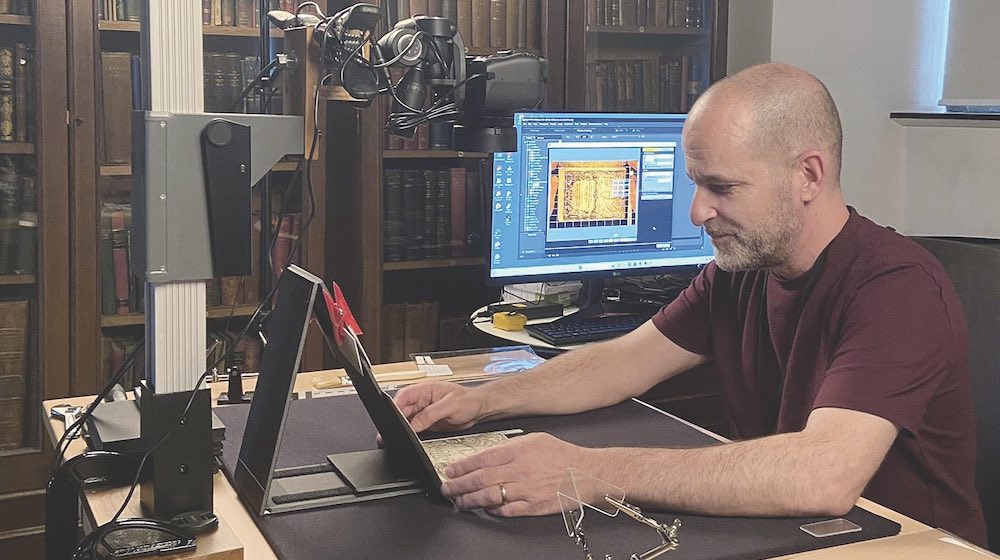A Book You Would Love To Read...
A Book You Would Love to Read...
September 29, 2022This story is part of an ongoing series of editorials in which HMML curators and catalogers examine how specific themes appear across HMML’s digital collections. Dr. Catherine Walsh and Margaret Bresnahan share this story about Banned Books.
A book you would love to read is lost, altered, destroyed, buried, hidden, left unpublished, unwritten, banned.
What follows is a selection of such outcomes, seen across the collections that HMML has photographed, including Western European manuscripts, Eastern Christian manuscripts, Islamic manuscripts, and Maltese manuscripts, as well as works in HMML’s Special Collections and Art & Photographs collection.
Censored

For nearly a century in Tokugawa, Japan, all woodblock prints were examined by official censors and marked with the censors’ seals. Three subjects were officially banned: pornography, Christianity, and the imperial Tokugawa family. Between 1842 and 1853, individual censors marked approved prints with their own seals, identifiable to the individual by incorporating characters from the censor’s name. Images that did not pass the censors are lost to history. For more information, see Sarah E. Thompson and H. D. Harootunian, Undercurrents in the Floating World: Censorship and Japanese Prints (New York: The Asia Society Galleries, 1991) as well as J. Noel Chiappa, “Nanushi Censor Seals.”
Pictured: detail of censor seals on a woodblock print by Utagawa Kunisada, Kaga Province: Actor Ichikawa Danjûrô VIII as Musashibo Benkei, from the series The Glories of the Provinces of Japan, published in 1852. This print is part of the collection of Saint John’s University in Collegeville, Minnesota. (AAP4414)
Pictured: detail of censor seals on a woodblock print by Utagawa Kunisada, Kaga Province: Actor Ichikawa Danjûrô VIII as Musashibo Benkei, from the series The Glories of the Provinces of Japan, published in 1852. This print is part of the collection of Saint John’s University in Collegeville, Minnesota. (AAP4414)
Lost
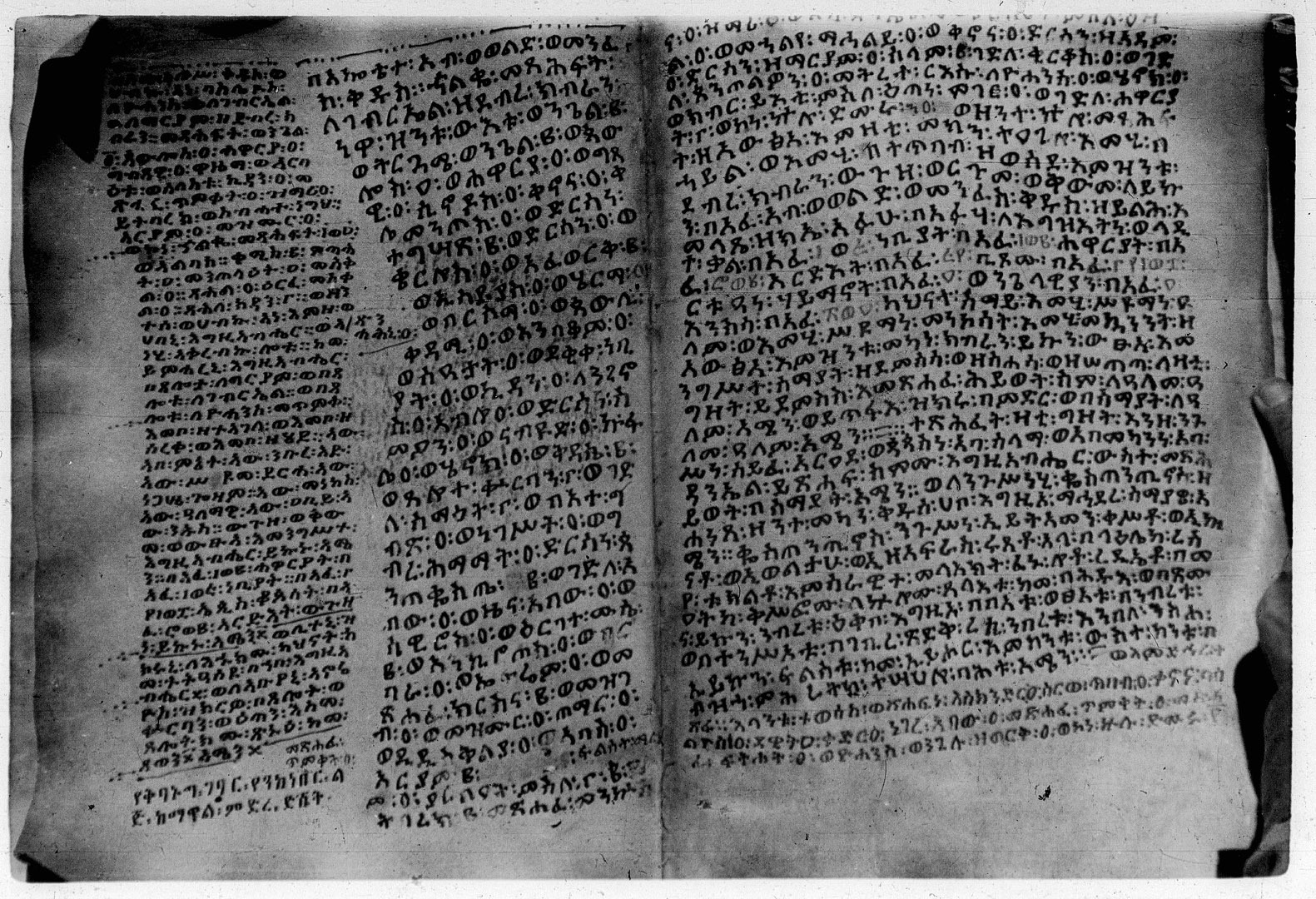
In addition to the Gospels, this book contains an inventory list that includes the titles of several lost Geʻez (Old Ethiopic) translations, among them the Assumption of Moses, an ancient writing quoted in the Bible (Jude 9). Although part of a Latin translation of this work survives in a palimpsest, the manuscripts recorded here may have represented the last complete copies of the text.
The scholar Walter Harrelson’s search for the Assumption of Moses in Ethiopia brought him into contact with Ethiopian Patriarch Abuna Tēwofelos in 1970, a meeting that instigated a major project to photograph Ethiopian manuscripts: the Ethiopian Manuscript Microfilm Library (EMML), the most important scholarly access point to materials in this tradition. This Gospel book was photographed at the Kebrān Gabre'ēl Monastery, located on Lake Ṭānā in northern Ethiopia. (HMML Sep. Ethiopia, Kebrān. MS. 1)
The scholar Walter Harrelson’s search for the Assumption of Moses in Ethiopia brought him into contact with Ethiopian Patriarch Abuna Tēwofelos in 1970, a meeting that instigated a major project to photograph Ethiopian manuscripts: the Ethiopian Manuscript Microfilm Library (EMML), the most important scholarly access point to materials in this tradition. This Gospel book was photographed at the Kebrān Gabre'ēl Monastery, located on Lake Ṭānā in northern Ethiopia. (HMML Sep. Ethiopia, Kebrān. MS. 1)
Recovered
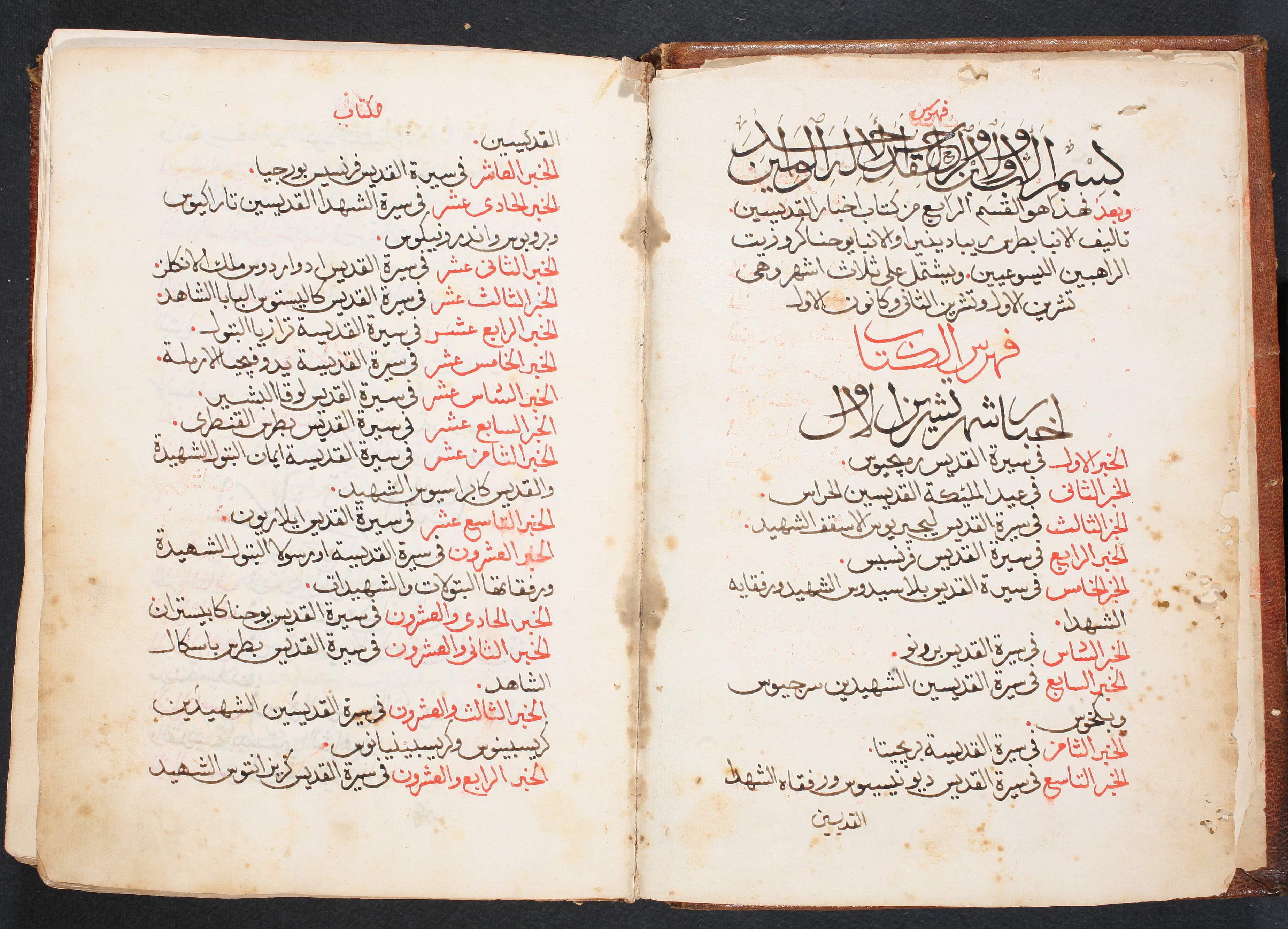
This manuscript was located at the monastery of Dayr Ziyārat al-ʻAdhrāʼ in ʻAynṭūrah, Lebanon, when it was lost. It was later recovered by Yūsuf al-Marīḍ and is now part of the collection of the Lebanese Maronite Missionary Order in Jūniyah, Lebanon. (LMMO 00509)
Hidden
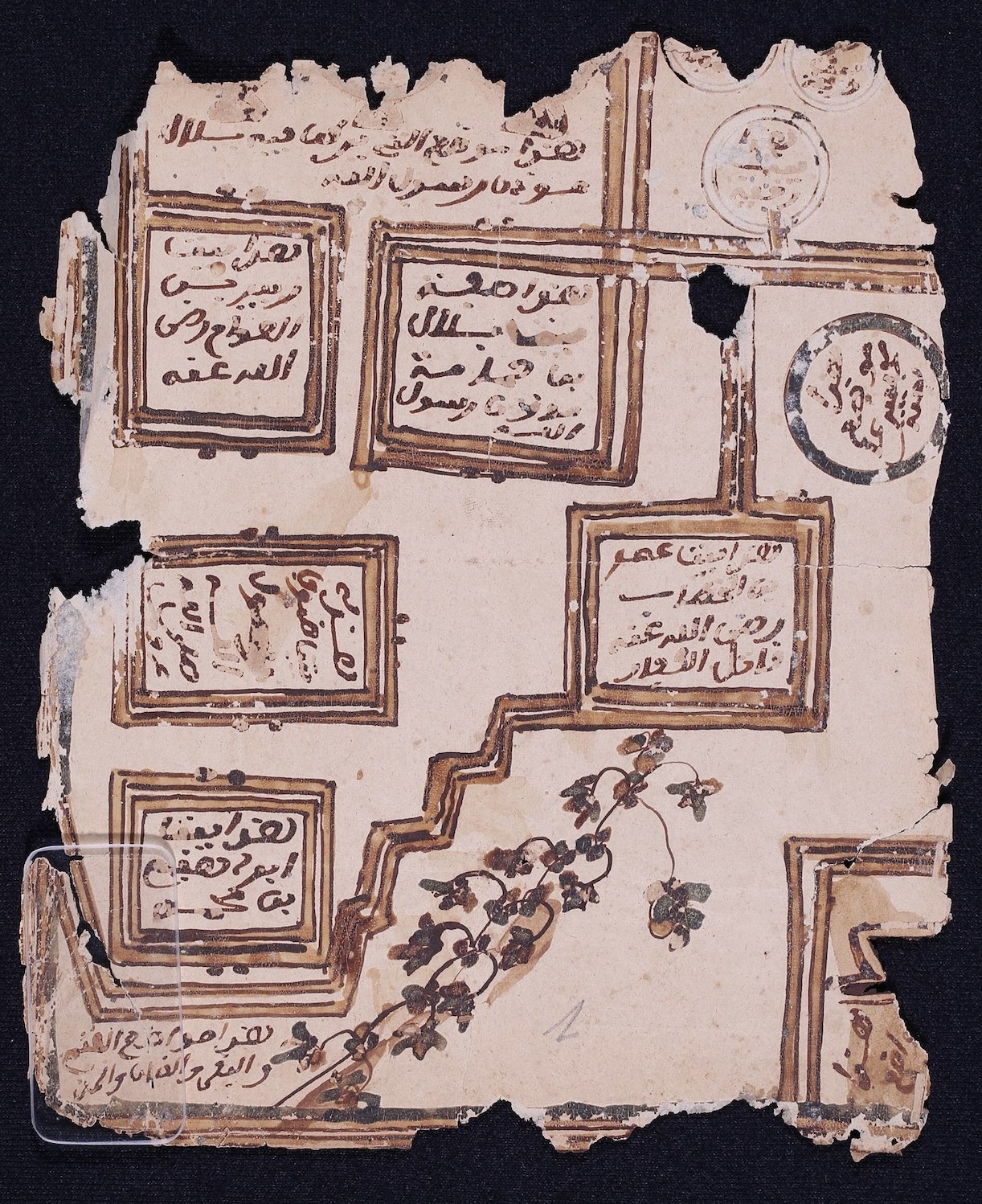
In the spring of 2012, the city of Timbuktu was attacked and occupied by a coalition of radical Islamist forces. The invaders ransacked ancient libraries and destroyed historic shrines dedicated to local Muslim saints. In advance of the occupation, more than 200,000 manuscripts from some 36 libraries were evacuated from Timbuktu. The rescue was led by Dr. Abdel Kader Haidara, caretaker of the Mamma Haidara Library, the city’s largest. Transporting manuscripts in metal boxes via boat and truck, Dr. Haidara brought the manuscripts to the Malian capital of Bamako, where they remained packed in their chests until a plan was made to sort, digitize, and describe them.
Pictured: a city plan of Medina depicting houses of the Prophet’s Companions. This manuscript is part of the collection of the Mamma Haidara Library in Timbuktu, Mali. (SAV BMH 21584)
Pictured: a city plan of Medina depicting houses of the Prophet’s Companions. This manuscript is part of the collection of the Mamma Haidara Library in Timbuktu, Mali. (SAV BMH 21584)
Destroyed
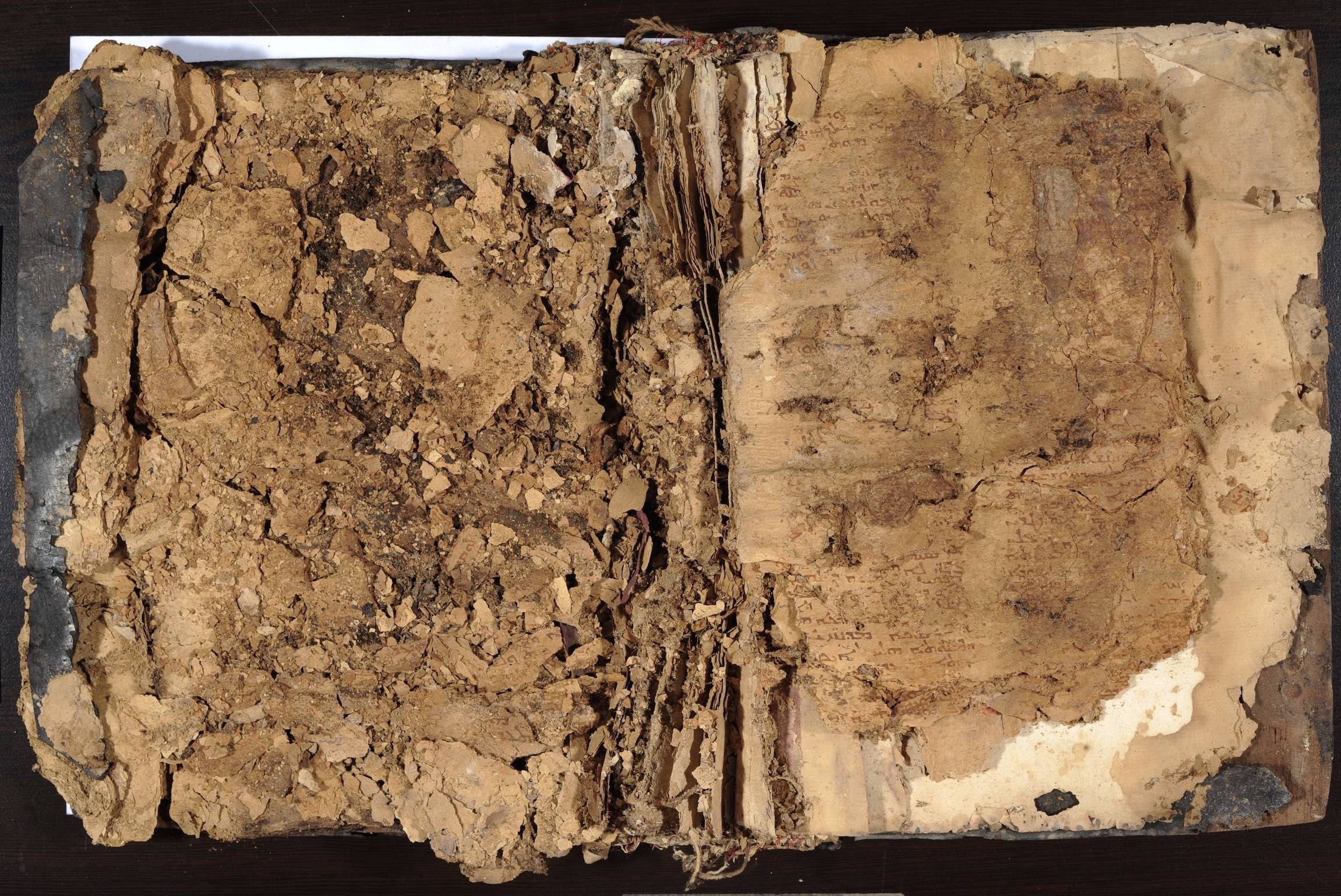
The cover and nearly completely lost text from a 9th-century Syriac Hexameron by Jacob of Edessa, destroyed as a consequence of war. The manuscript was buried in the ground to protect it during conflict. It is part of the collection of the Chaldean Catholic Church in Baghdad, Iraq. (CPB 00440)
Rewritten

A section of crossed-out text, followed by fully removed pages. The removed and defaced text discusses the attempts at unity between Western and Eastern Churches at the Council of Florence in the 15th century. The person who removed the offending text wrote a marginal note: “From here the speech is an error and a lie, because not unity, but rather division occurred at the Council of Florence, and the Easterners and Westerners disputed unto death concerning the orthodox faith.” This manuscript is part of the collection of Dayr Sayyidat al-Balmand in Tripoli, Lebanon. (BALA 00126)
Erased
In this miniature, the right half of the image was altered to be almost completely erased. The manuscript is part of the collection of Stiftsbibliothek Zwettl, Zwettl Stadt, Austria. (Codex Zwettlensis 204, HMML project number 6801; fol. 133r).
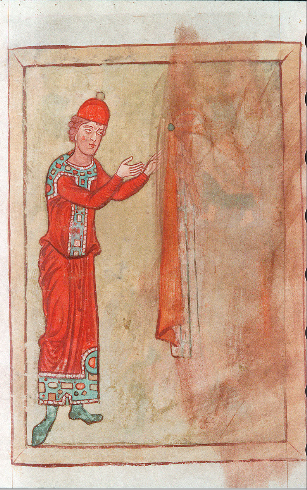
Prohibited
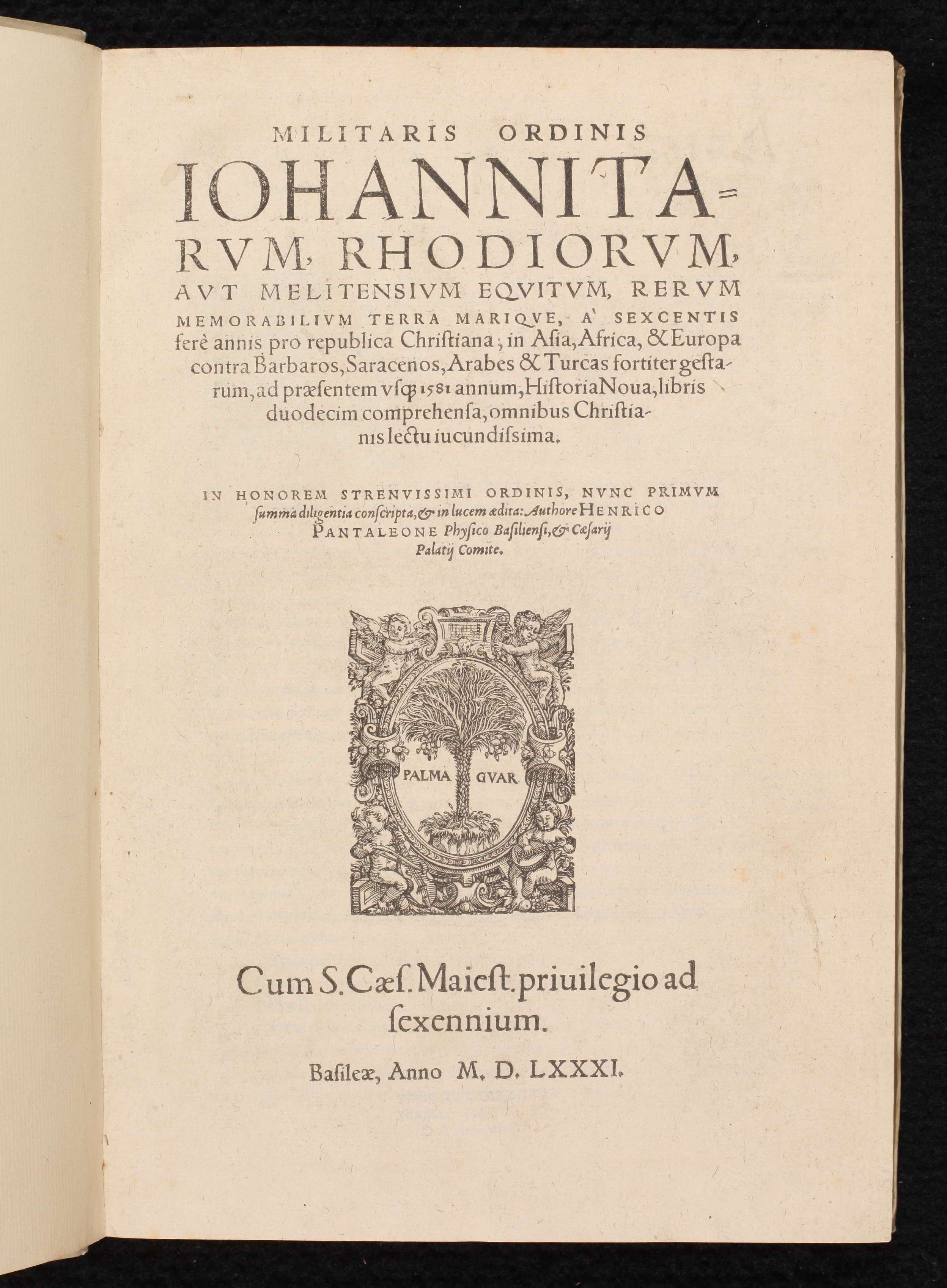
This text—Militaris ordinis Iohannitarum, Rhodiorum, aut Melitensium equitum, by Heinricus Pantaleon (1581)—was banned by the Roman Inquisition in Malta and thus placed on the “Index of Prohibited Books” (Index Librorum Prohibitorum) by the Catholic Church. The banning caused at least one copy of the text to be publicly burned in Malta in May 1609.
This copy of Pantaleon's text is in the collection of Catholic University of America, Washington, D.C. (CUAMAL 00057)
This copy of Pantaleon's text is in the collection of Catholic University of America, Washington, D.C. (CUAMAL 00057)
Burned
A list of 54 books, including Heinricus Pantaleon’s Militaris ordinis, that were burned by Inquisitor Evangelista Cabonesio (1608–1614) in front of a large crowd in Vittoriosa, Malta, in 1609. This manuscript is in the collection of the Cathedral Archives in Mdina, Malta. (Malta Series I 2825 B)
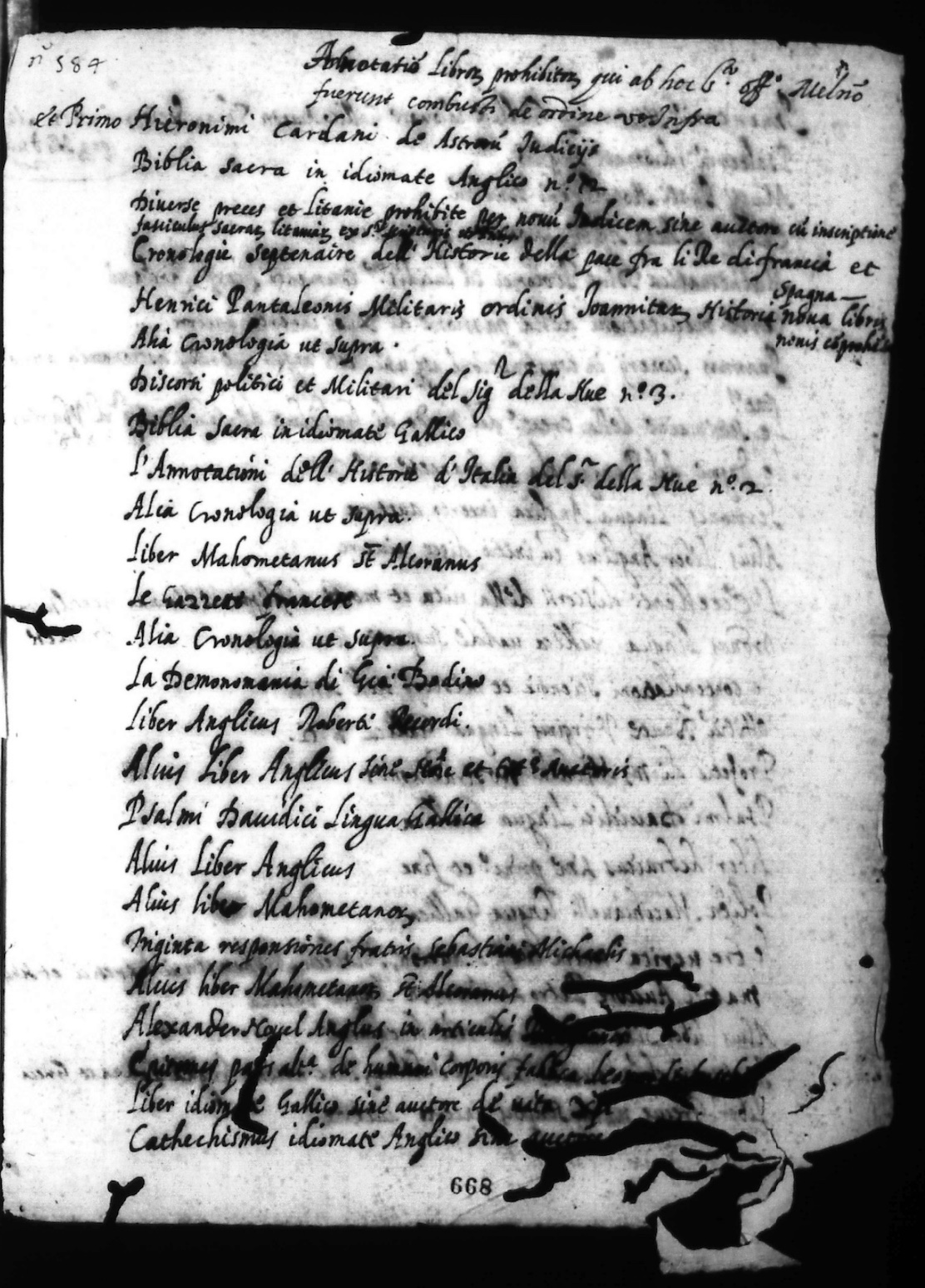
Forbidden

Littérature scandaleuse (scandalous literature) had a singular influence in destabilizing the privileged status of the nobility, monarchy, and Catholic Church in France during the 18th century, leading up to the French Revolution in 1789.
Pictured: L’Ordre de Malthe dévoilé ou voyage de Malthe (1792), an example of littérature scandaleuse and the types of arguments that Revolutionaries leveled against the Order of Malta (see interview, pages 4–5, for details). This book is in the collection of HMML in Collegeville, Minnesota. (HMML 00185)
Pictured: L’Ordre de Malthe dévoilé ou voyage de Malthe (1792), an example of littérature scandaleuse and the types of arguments that Revolutionaries leveled against the Order of Malta (see interview, pages 4–5, for details). This book is in the collection of HMML in Collegeville, Minnesota. (HMML 00185)
Condemned
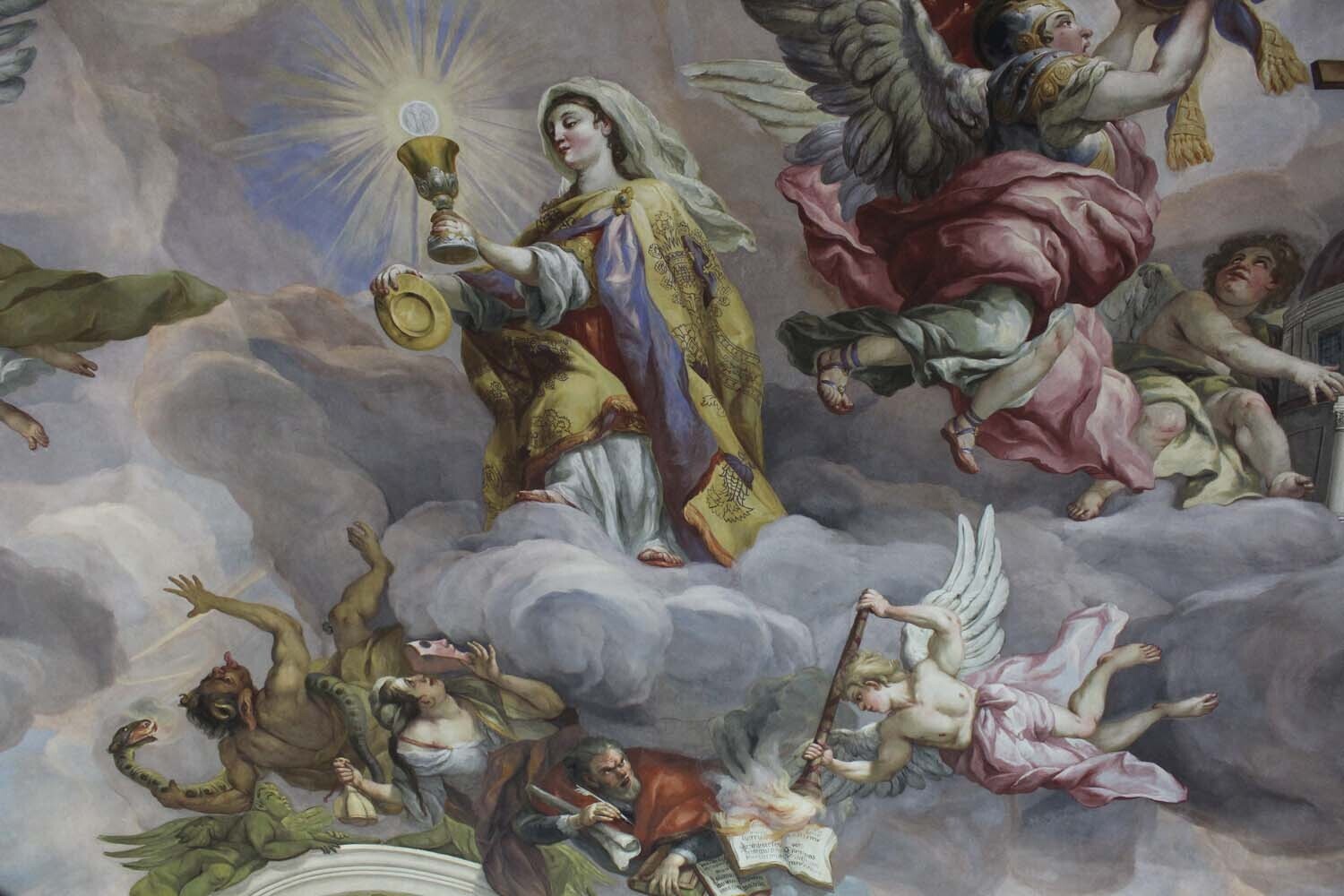
The Karlskirche (Church of Saint Charles Borromeo) in Vienna, Austria, was consecrated in 1737, built at the request of Emperor Charles VI (1711–1740) in honor of his namesake patron saint, Charles Borromeo. Borromeo was the Archbishop of Milan (1564–1584) and a leading figure of the Counter-Reformation against the Protestant Reformation. Pictured is a detail of the dome’s interior fresco, depicting an angel burning heretical books. Photograph by Dr. Matthew Z. Heintzelman, 2015.
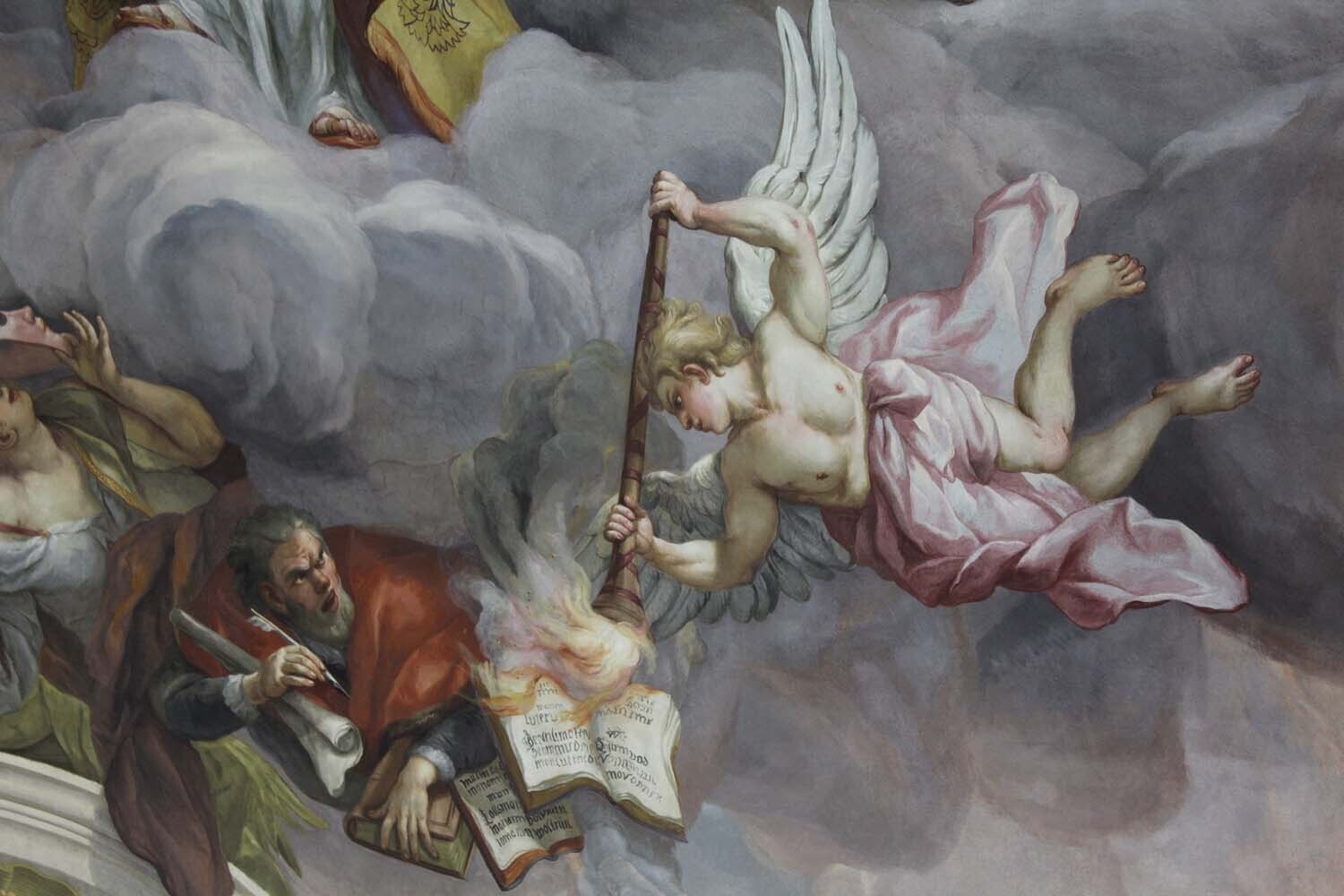
Detail of Karlskirche ceiling, Vienna, Austria. Photograph by Dr. Matthew Z. Heintzelman.
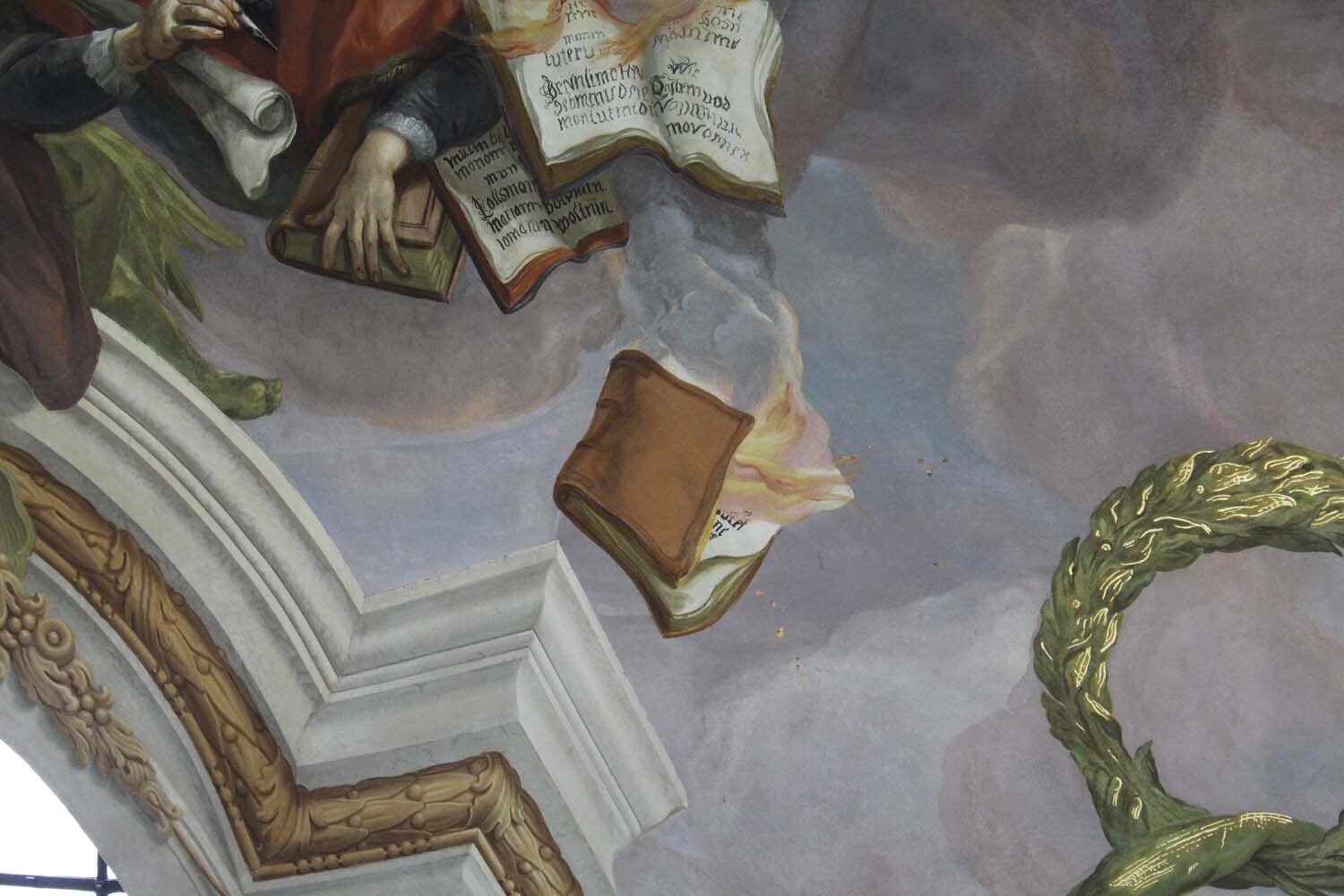
Detail of Karlskirche ceiling, Vienna, Austria. Photograph by Dr. Matthew Z. Heintzelman.
ABOUT THE AUTHORS: Dr. Catherine Walsh is director of cataloging at HMML. Margaret Bresnahan is director of communications at HMML.
Share:

